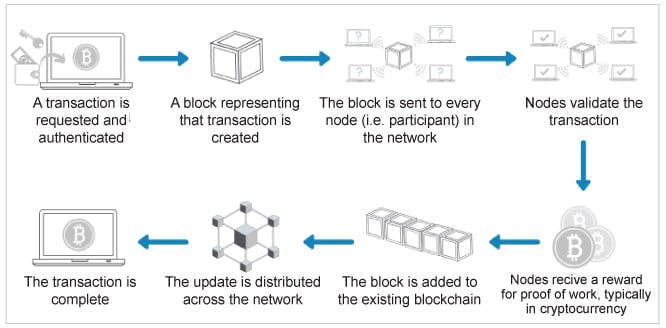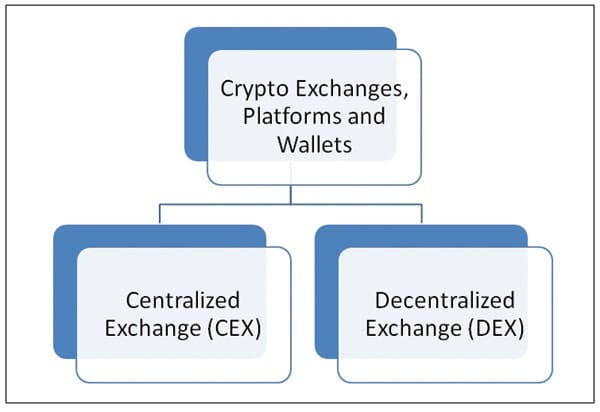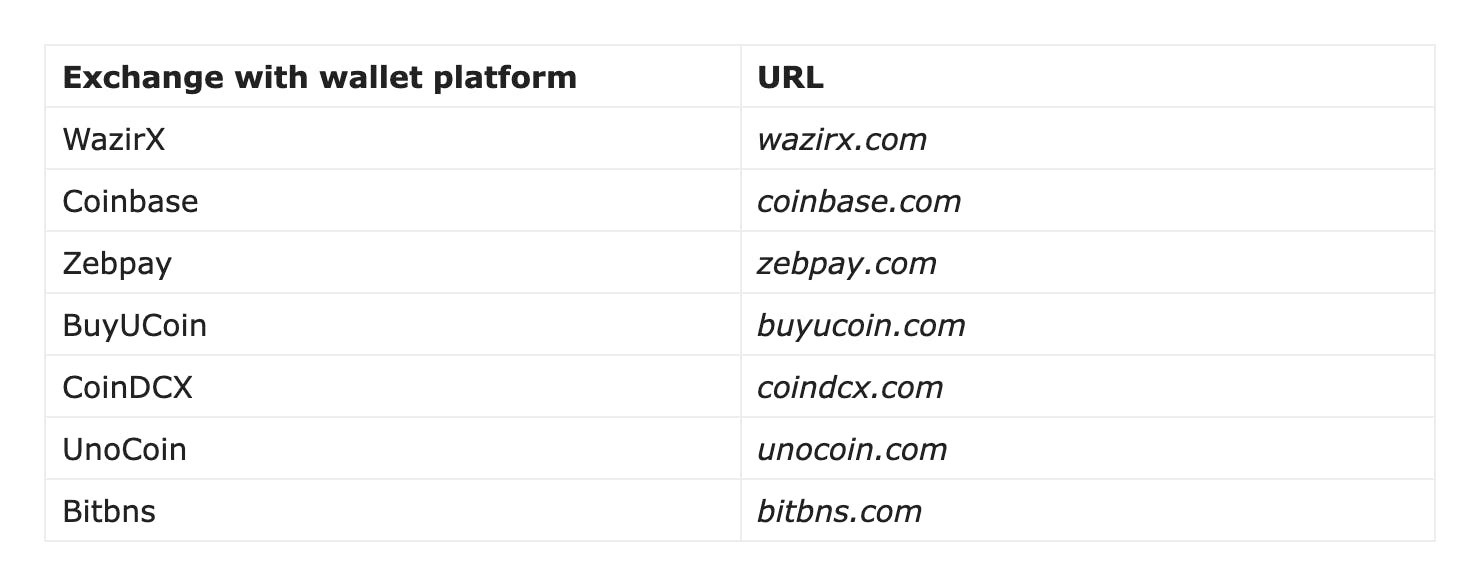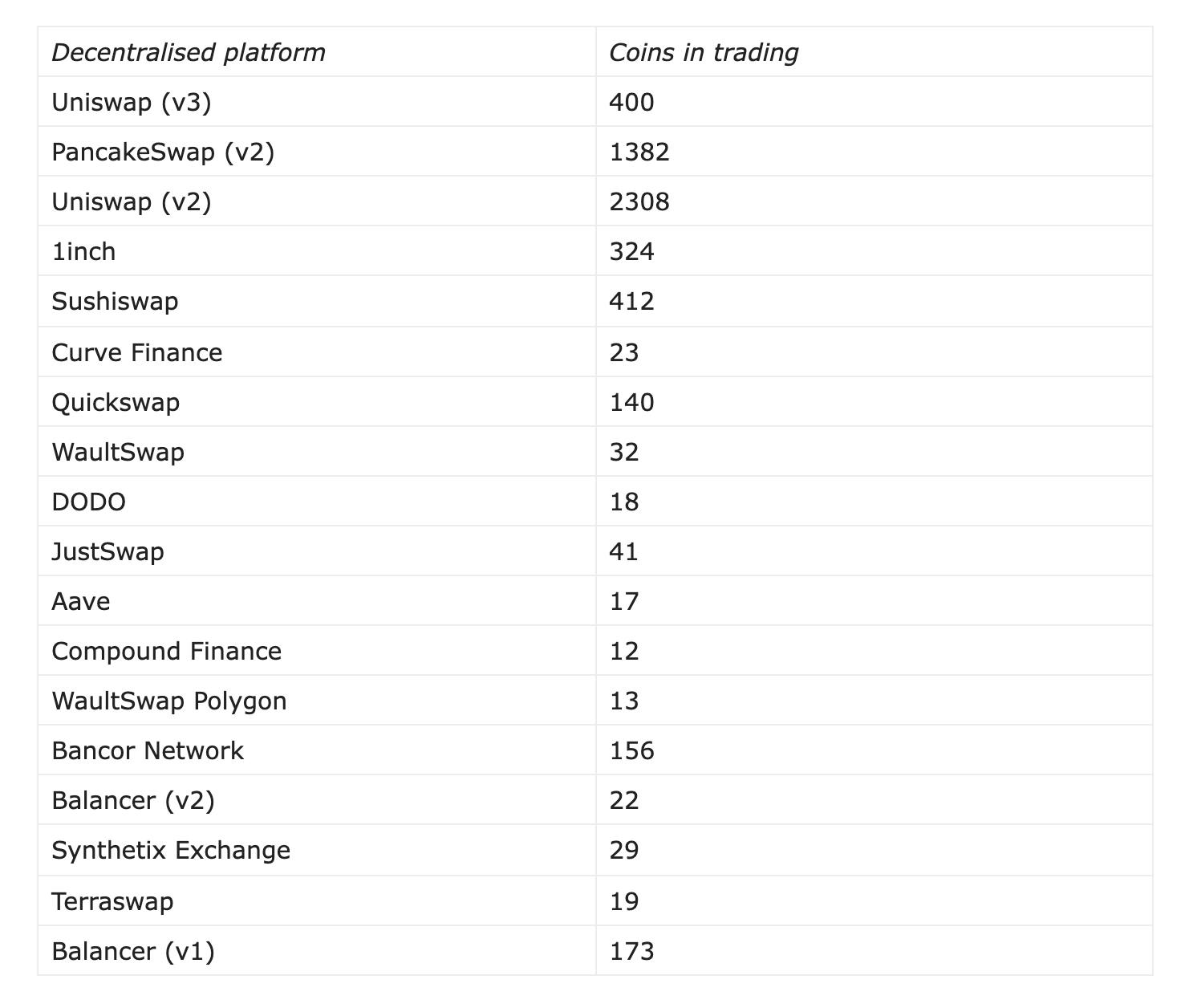Blockchain Fundamentals, Cryptocurrencies and Open Source
All about Blockchain, Cryptocurrencies and Open Source
Overview
This article is divided into 4 sections, 1st section is about blockchain fundamentals, 2nd section deals with the key features of building a blockchain mobile app, 3rd section dives into cryptocurrency wallets available for us to use and 4th section outlines how the opensource is driving the blockchain revolution.
You can jump onto any section you like to read, the order of reading these sections are not related.
Blockchain Fundamentals
Blockchain technology is a constantly evolving, secure and shared record-keeping system in which each user has a copy of the data, which can only be modified if all parties involved in a transaction agree. This section examines the fundamentals of blockchain technology.
A Blockchain Transaction
To understand the fundamentals of the blockchain, we need to understand how a transaction can be added to the existing blockchain. This can be done by going through a few important steps, as illustrated in the below figure.

- Assume that user 1 wants to send X amount of digital bitcoins to user 2. User 1 then initiates the transaction.
- A transaction is initiated by user 1's node by first making it and then digitally signing it with its private key. A transaction in a blockchain can reflect a range of actions.
- A peer-to-peer (P2P) network broadcasts the desired transaction to each individual computer (or node).
- Individual nodes receive the request and attempt to validate the transaction using cryptographic techniques. The miner node is the final node in the validation chain. These miner nodes are compensated in Bitcoin.
- The verified blocks are now added to the blockchain network. Hashing is used to connect these nodes.
- The approved transactions are then recorded in a public ledger. Transactions are completed and the ledger is updated after the block is added to an existing chain.
Cryptography Techniques Used in Blockchain
Hashing, public-private key mechanisms, and digital signatures are the key cryptographic techniques used by the blockchain community. In this case, a hash feature is implemented to offer each user the opportunity to view the blockchain in its entirety. Blockchain characteristically uses the SHA-256 hashing algorithm. Public-private key pairs are used to gain access to the information and allow transactions. Digital signatures are also used for multi-signature contracts and digital wallets on the blockchain, as well as to ratify transactions by signing them securely (offline).
Working of A Blockchain Network
In a blockchain network, each node holds a complete copy of the distributed ledger. The four fields of a block in this network are the block number, the data field, the hash value, and the nonce. Miners adjust the value of nonce to make it a suitable number for hashing the value of a block. A nonce is a random whole number that is a 32-bit (4-byte) field that is changed by miners to make it an acceptable number for hashing the value of a block. In addition, the chain of blocks is generated by applying the hash of the previous block to the current block. The previous block's hash is stored in the field prior.
Four zeros are used to begin the hash value. This determines whether or not a block is valid. Each new hash value is created by combining the old hash value, the new transaction block, and a nonce. The hash cash difficulty factor is determined by the number of leading zeroes required in the hash output. The difficulty is tweaked so that block production stays consistent at about one block per ten minutes. The more difficult it is to alter the blockchain, the tougher it is to overwrite the blockchain and double-spend coins.
Winding Up
Blockchain technology is widely accepted by a variety of businesses. It has opened up a plethora of opportunities in the areas of healthcare, finance, accountancy and the online marketplace. The adoption of blockchain technology is expected to grow manifold in the coming years, offering quite a wide range of jobs for young aspirants.
Basics of Building a Blockchain App
A blockchain stores data in such a way that it is almost impossible to alter or hack it. In this section, we will go through the key features of the blockchain, look at blockchain development platforms, and view the steps in the blockchain mobile app development process.
Some Blockchain Apps
While blockchain development began with cryptocurrencies, it is no longer limited to them. Blockchain applications have now gone beyond cryptocurrency and into a variety of other sectors. As we all know, the main benefit of blockchain technology is that it ensures maximum data transparency and security, helping businesses and organisations save a significant amount of money on standard security methods.
The following are some useful blockchain apps.
1. Filament: This is an excellent example of a blockchain-based IoT app that uses blockchain data ledger systems to manage data processed by software and microchip hardware. Several linked devices can communicate information over the blockchain and keep in sync with the help of the app.
2. KYC-chain: For many firms, completing Know Your Customer (KYC) documentation is a must. This simple and effective blockchain-based program streamlines the entire process of handling client documentation across administrative and criminal databases in many nations.
3. BurstIQ: BurstIQ is healthcare software that uses Big Data and blockchain technology to allow patients and doctors to share and collaborate on vital medical information.
Development Platforms
There are more than two dozen blockchain development platforms. A few of them are described below.
1. Multichain: With this powerful platform, developers can create and deploy private blockchains that can be used by a variety of businesses.
2. Hyperledger: This distributed ledger technology is used to govern the connected ecosystem of things and supply chains. This advanced blockchain platform has received a lot of acclaims.
3. Ethereum: A versatile opensource blockchain technology, Ethereum is commonly used for decentralised apps, smart contracts and initial coin offerings (ICOs).
4. EOS: The EOS platform’s goal is to create a reliable smart contract function. It’s also appropriate for modern businesses’ need for highly scalable and decentralised storage and hosting.
Blockchain systems are available in a wide range of sizes and shapes. Determining which platform is better and more suitable for one's application needs might be confusing. The solution is contingent on the desired capabilities and use-cases.
Choosing the most appropriate platform: The key to your project’s success lies in determining the platform’s character. Platforms based on cryptocurrencies as well as those based on smart contracts are available.
Decide whether you need smart contracts or not: You need to determine if your app needs smart contracts or not.
Selecting the consensus protocol: The consensus protocol ensures that every new block added to the blockchain is the only version of the truth that all nodes in the blockchain agree on, such as proof of stake, proof of work, proof of elapsed time, and so on.
Choosing the cryptocurrency: Another challenge is determining whether or not a cryptocurrency is required.
Selecting between a public and private network: Based on the requirement, you need to decide whether a public or a private network is needed.
Process of Blockchain Mobile App Development
There are mainly five stages in the blockchain app development process.
1. Identify the problem that the blockchain is required to solve: To begin, thoroughly examine the problem description and create a full report on it. Consider whether you need to create a new app from scratch or if you can just integrate the blockchain into an existing one.
2. Select the best platform for the app: Select the most appropriate platform for your project. Determine if you need a smart contract app or a crypto-transaction app, as well as the type of network and consensus protocol you'll need.
3. Requirement analysis: Begin by doing the requirement analysis and evaluating the app idea’s requirements. Do more brainstorming around the idea and, if possible, fine-tune it.
4. Create a blueprint of the idea: Try to develop the proof of concept that will put the entire app concept into a visual structure.
5. Development of the application: Develop the application employing best practices. Ensure to build a robust blockchain app.
Winding Up
We’ve covered the basics of blockchain in this essay — its main characteristics, as well as several development platforms and stages for developing blockchain applications. If you find the subject interesting, you can delve deeper into it. There are a variety of resources available on the Internet.
Cryptocurrency Wallets
Cryptocurrencies are getting entrenched in the global financial system slowly and steadily, with certain companies using these to pay their employees too. Hesitancy with respect to their use is slowly ebbing, and you may run the risk of being behind the times if you don’t stay updated on the latest trends in this domain. This section lists the exchanges and wallets you should be aware of in case you want to buy or trade-in cryptocurrencies.
Trends in Cryptocurrencies
Due to the high potential for profit, cryptocurrency trading is considered extremely lucrative, particularly among the younger population. Traditional stock market trading has a lot of restrictions and rules. There are no such limitations in the case of cryptocurrencies, and big profits can be produced immediately. The 'crypto market,' in which 'crypto users' trade various types of cryptocurrencies, is also known as the cryptocurrency industry.
The price of a BitCoin (BTC) was less than one US dollar around 10 years back when it was launched. Today, its price is more than US$ 30,000. A few months ago, its price touched around US$ 60,000, proving it is a very attractive form of investment.
The market capitalisation of cryptocurrencies is around 338 million US dollars, with 13,951 BitCoin ATMs located in different parts of the world, as per a report from Statista.
Wallets and Exchanges
Currently, there are a number of exchanges in the world that offer platforms and wallets for buying and trading cryptocurrencies. These include Web-based environments as well as apps for Android, iPhone and other mobile phone platforms. Crypto users can buy and sell different currencies that are legal tender around the world with ease on these sites.
The major worldwide crypto exchanges in the world that provide wallets and Web platforms for cryptocurrency trading are listed in the below figure. In crypto exchanges, pairings refer to the pairs of cryptocurrencies that are used to buy and sell such coins.

In the crypto world, there are two types of exchanges and wallets — centralised and decentralised.

Centralized Exchanges
The centralised exchanges and wallets are owned by companies or corporate giants, which record the complete Know Your Customer (KYC) details either through video KYC or paper-based KYC. Users can open accounts in these centralised exchanges and then trade in any cryptocurrency.
The below figure lists some centralized exchanges.

Decentralized Exchanges
Decentralised exchanges are platforms on which the account is opened directly without any intermediate company, and trading is done directly by the crypto users.
The below figure lists some decentralized exchanges.

Winding Up
The jury is out on the use of cryptocurrencies because these are sometimes used to circumvent the national money transfer system. Some governments prohibit their use in order to prevent money laundering.
In order to incorporate the maximum benefits and features into a real-world scenario, the use of cryptocurrencies in any country demands legislation and procedures. The benefits to society and the corporate sector might be substantial if cryptocurrencies are used for real-time applications and e-governance.
Open Source Blockchain Revolution
Blockchain is a disruptive technology that is changing the world in a variety of ways. Cryptocurrencies are the most obvious example. This section compares and contrasts this technique with opensource, another revolutionary technology that has transformed software development.
Blockchain Characteristics
Immutability: A hallmark feature of blockchain is that it is incorruptible. Data once saved in a block cannot be changed without breaking the chain.
Decentralisation: Blockchain does not require a central authority to maintain the ledger. All nodes in the network have a copy of the ledger that gets updated with every transaction.
Enhanced security: Decentralisation and consensus mechanisms built into blockchain make it highly secure, as every transaction has to be verified with ‘proof of work’.
Distributed: The blockchain ledger is not a singular entity in the hands of a few; instead it is a shared entity that is accessible and maintained by everyone in the network.
Transparency: Every addition to the blockchain requires consensus from all nodes in the peer-to-peer network. This makes every transaction transparent and public.
Open Source Characteristics
Transparency: The founding principle of open source is to make the source code of the project public. This enhances the transparency of the project, as every detail that goes into its development can be freely accessed by anyone.
Enhanced security: Finding security loopholes in the software is way easier when the code is non-proprietary and is publicly available. This naturally enhances the security of the software or, at the very least, can help raise public awareness about the potential security-related pitfalls.
Collaboration: The primary purpose of open source software is to encourage other developers to collaborate and contribute to the development of the software. This makes open source development, by nature, a community experience.
Modifiability: Open source software can be modified and re-distributed to solve different problems. This is the case with Linux, as its modified ‘distributions’ are used in various different gadgets and computers.
Decentralisation: One can argue that open source software is not inherently decentralised as making changes to the main project still requires the approval of the project moderator(s) and the owner(s). But if perceived from a different angle, given that the source code can be modified and re-distributed under proper licensing, this gives the developer the autonomy to use the software as and how desired thus making the process decentralised.
Convergent Evolution
Opensource software and blockchain are two independent technologies with different themes and strategies for addressing different problems. When we compare the attributes of blockchain to open source, however, we discover certain similarities.
In evolutionary biology, the term 'convergent evolution' refers to the occurrence in which animals from distinct time periods or epochs acquire similar characteristics. This can be seen in molecular biology, animal morphology, and even plant morphology. This holds true for technical breakthroughs as well. We produce new technologies every day to address a wide range of problems; nonetheless, there are underlying patterns in the motivations that drive the creation of these technologies.
Winding Up
Blockchain is new, but open source technology has been around for a long time. In my perspective, the rise of open source technology has had a direct impact on the birth of blockchain. Both technologies are focused on transferring power from a small number of people to a big number of people. Both strive to increase product security and transparency while also promoting fairness and collaboration. While the applications of open source and blockchain are diverse, the motives for their creation are similar. It is safe to assume that open source and blockchain share many characteristics in common and are hence the product of technological convergence.
Make sure to follow me to get regular updates or subscribe so that you never miss my upcoming articles, ranging from Python to Computer Vision to Scala.
Just starting your Open Source Journey? Don't forget to check Hello Open Source
Want to showcase your Python project or just out there to explore? Check Awesome Python Repos
Want to make a simple and awesome game from scratch? Check out PongPong
Want to
++your GitHub Profile README? Check out Quote - README
Till next time!
Namaste 🙏

